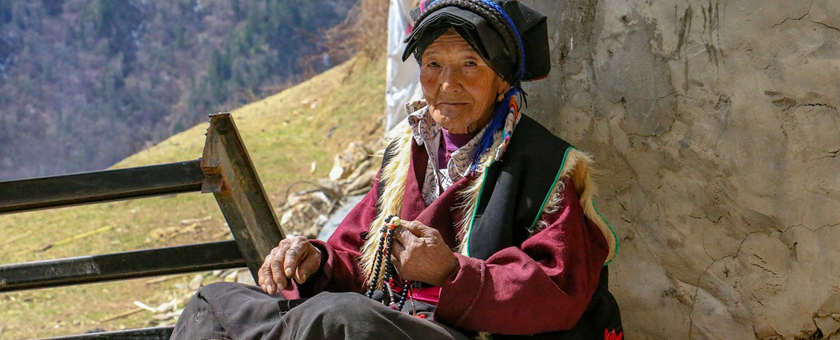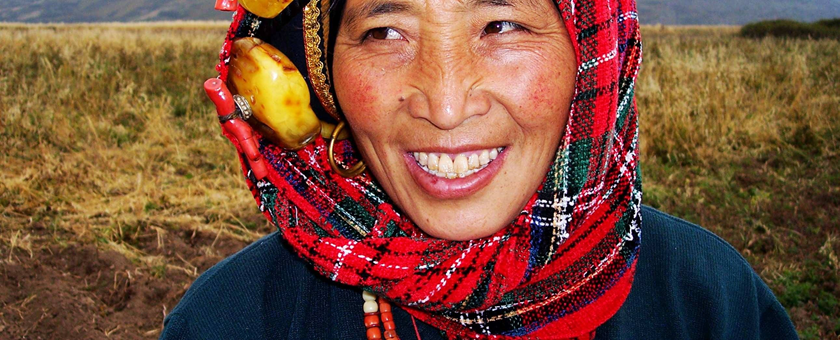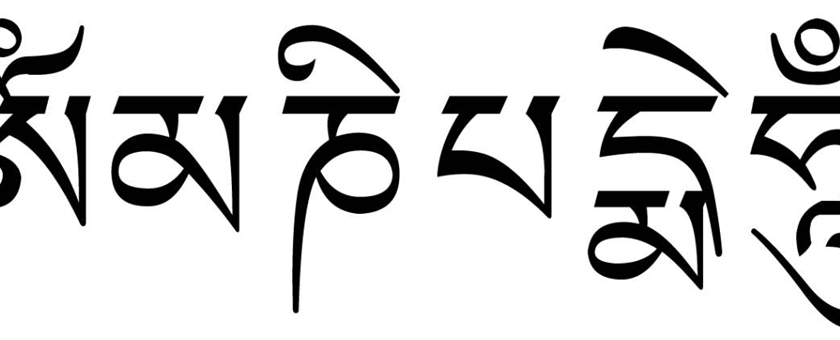Tibetan Nationality
Tibetans are one of the 56 ethnic groups in China and are indigenous to the Tibetan plateau. In China, it is mainly distributed in Tibet Autonomous Region, Qinghai Province and western Sichuan Province, Diqing of Yunnan Province, Gannan of Gansu Province and other areas. Lhasa is a holy place in the hearts of Tibetans. Currently, there are about 7 millions Tibetans in China (2016).

History of Tibetan Nationality
According to archaeological findings, their ancestors lived in the Yarlung Zangbo River delta. Historical records show that during the Han Dynasty (206 bc-220), Tibetans were part of the Western Qiang people. As the Han entered in Tang Dynasty (618-907), they developed a deep friendship with the Tibetans, and eventually Princess Wencheng of the Tang Dynasty married the Tibetan leader Songtsan Gambo. Many believe that Princess Wencheng first brought Buddhism to Tibet, where it spread quickly. In the 13th Century, the Mongols established the Yuan Dynasty (1271-1368) and began to exercise sovereignty over Tibet.

Distribution of Tibetan Nationality
The total Tibetan population reached 6.282 million. With a total population of 0.4713 percent, it is the eighth largest ethnic group in China. Tibetans mainly live in the Tibet Autonomous Region and Qinghai Haibei, Hainan, Huangnan, Guoluo, Yushu and other Tibetan autonomous prefectures and Haixi Mongolian Tibetan Autonomous Prefecture, Haidong Region. Sichuan Aba Tibetan and Qiang Autonomous Prefecture, Ganzi Tibetan Autonomous Prefecture and Muli Tibetan Autonomous County, Gansu Gannan Tibetan Autonomous Prefecture and Tianzhu Tibetan Autonomous County, and Yunnan Diqing Tibetan Autonomous Prefecture.

Language and Character
Tibetan people have their own language and Character. Tibetan language belongs to the Tibetan branch of the Sino-Tibetan language family, which is divided into three dialects: Tibetan, Kang, An Duo. The current Tibetan language is based on the ancient Sanskrit and western region script pinyin written in the early 7th Century. The use of Tibetan strengthened the economic ties between the Tibetan and the central plains.
The word "Tibetan" is written as "bod-yig", which means "Character of Tibetan". Tibetan, as the written communication tool of Tibetan people, has a long history second only to Chinese in China. It is a type of Pinyin, consonant type, vowel and punctuation symbols in three parts. There are 30 consonants, 4 vowels, and 5 reverse letters.

Religion:
Lamaism, a form of Mahayana Buddhism, was introduced to Tibet in the Seventh Century and developed by absorbing local religious beliefs and rituals known as the "Ben". Lamaism is divided into many different sects, each of which claims to be orthodox. With the exception of the Red sects, all sects, including the White, Sachar and Yellow sects, established local authorities at different times that combined political and religious power.
In western Tibet and the pastoral areas of Qinghai and Sichuan provinces, the early Tibetan indigenous religion, Ben (known locally as the "Black Religion"), remains active. In a few places there are temples built by the Han, mosques built by the Hui and Christian and Catholic churches built by foreign missionaries.

Prayer Wheels
Tibetans believe in Lamaism. Believers must recite sutras frequently. For people who can't read, they can turn prayer wheels with scriptures inside. It has become the daily work of the Tibet people to turn the drum, which is equivalent to chanting. Many Tibetans have portable prayer wheels in their homes. They come in different sizes and qualities, but they have one thing in common: they all have scriptures in them. Followers of the Yellow sect turned their wheels clockwise, while followers of the Black sect turned their wheels counterclockwise.

Diet
Tibetans usually eat three meals a day, but during the harvest season they eat four, five or more. Their staple food is Tsam-pa, buttered tea, lamb and beef. The Tsampa, made from highland wheat, is easy to carry and ready to eat, so you can see many people carrying Tsampa bags. As for drinks, they like Chang liquor, a kind of liquor also made from milk tea.

House Style
The architectural art of Tibetan Buddhist monasteries, in the ancient architectural art of Tibet, is the richest in ethnic and era characteristics. From the beginning of the formation of Buddhist monasteries to the formation of the main style of the architectural art of Tibetan Buddhist monasteries, it has experienced three development stages of the integration of temples, monasteriesand palaces.
The most representative Tibetan residence is blockhouse. Blockhouse is mostly stone and wood structure. The outer wall of the house is thick and the style is simple and straightforward. It is called blockhouse because it looks like a blockhouse.

Tibetan Opera
Tibetan Opera is an important cultural content of Tibetan people' s social life. In Mainland China, Tibet, Sichuan, Qinghai, Yunnan and other areas where Tibetans are living, Tibetan opera is very popular among them. This art form, at its content and the performance practices, has strong religious overtones of Tibetan Buddhism. Tibetan Opera is a very large branch of drama. Due to the natural conditions of the Tibetan Plateau, customs, culture, traditions and dialect differences of the Tibetan Plateau, it has many varieties of art and genres. During the Shoton Festival, Tibetan operas will be performed in Norbulingka Palace as well.

Tibetan Calendar
According to historical records, as early as 100 BC, Tibetans already had their own calendar using the moon to calculate the day, month and year. After several centuries, Bon followers (the primitive religion of Tibet) could accurately calculated the time of the winter solstice, and took it as the initial year, forming a variety of festivals and rituals. In the 7th century, two princesses-Wencheng and Jincheng married successively for Tibet alliance, bringing the mainland calendar to Tibet. Since then, the Tibetan and Chinese ancient calendar of India combined and in Yuan Dynasty formed into one unique calendar. Tibetan calendar is a lunisolar. The year is divided into four seasons, winter, spring, summer, autumn, and 354 days of the year. Most Tibetan holidays are established according to the Tibetan calendar.

Etiquette
Tibetan people pay great attention to etiquette, and they bow in different ways in daily life when they meet the elders and peers. In some areas, the folding of the hands is combined with a bow. Close your hands too much to show respect. This form of salutation is often used to meet an elder or someone to whom one respects. Presenting Hada (or Khatag) is traditional practice of respect and hospitality in Tibet. If you are presenting a Hada to a statue or a high lama, please raise the Hada above your shoulder and bow. When you receive a Hada, it is proper to accept with both your hands.

Costume
Tibetans are famous for their iconic traditional costumes. Both men and women like braids, but men always put them on their heads. A woman combs her hair in two bunches, or in many small braids that hang down to her shoulders, and at the end of the braid is tied with a beautiful ornament. They all wear long-sleeved dresses. When they dance, their sleeves look like wings flapping in the air. The monks wear robes, the color of which varies according to their belief in Tibetan Buddhism. In addition, Tibetan women prefer to wear aprons with beautiful patterns.

Festivals
Tibetan people have many festivals, almost one a month, including folk festivals and religious festivals. Of all these meaningful Tibetan festivals, the Shoton Festival, the Bathing Festival, the Saga Dawa Festival and the Tibetan New Year are the most important and interesting.

 Flow us
Flow us

